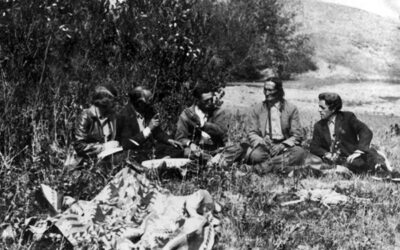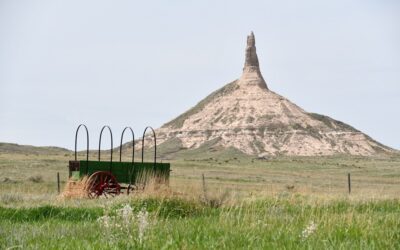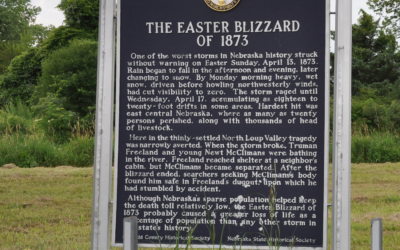Of all the legends connected with Nebraska, the most macabre is undoubtedly the Rawhide Creek fable. There are many variations, but the common theme is the murder of an Indian by a young white male. Friends of the Indian then capture the young man, skin him alive or otherwise mutilate him, and then kill him. Some topographic feature or landmark near the scene is afterward called “Rawhide” in the victim’s memory. As far as is known, the story first appeared in the Frontier Guardian (Kanesville, Iowa) on May 1, 1850, naming the victim as one of the two sons of a Mr. Green.
It persisted in western folklore and was repeated in graphic detail by R. W. Hazen in his History of the Pawnee Indians, published in Fremont in 1893. Hazen claimed that the man skinned was Seth Easterbrook, with a party of California-bound emigrants in 1850.
Not everyone accepted the story so naively. A Mr. Anderson, who wrote for the Columbus Journal in 1875, repeated the fable but was skeptical. He talked to Baptiste Bahylle, a Pawnee mixed-blood who told a more plausible story of how the stream was named, “It seems that many years ago . . . fur traders usually freighted their robes and furs annually from their various posts on the plains to old Peter Sarpy, whose place of business and head-quarters was on the Missouri River, a few miles below Omaha. On the arrival of their freight trains at this treacherous little creek, they would often find its banks overflowing on either side. In this emergency, they would improvise a boat made of dry elk and buffalo skins, upon which they would transport their loads over the stream, after which their oxen could easily swim and draw over the supply wagons. So the reader will observe it was the semi-aborigines who favored that stream with its present name, as the Pawnees all deny any knowledge of the traditional account above related.”



